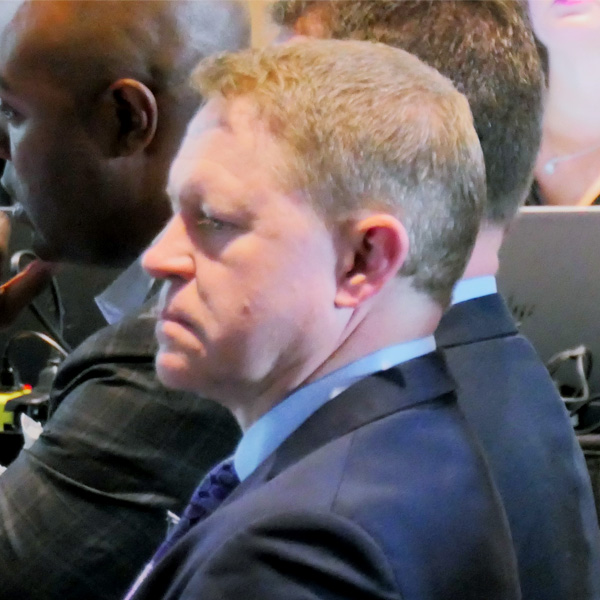California is suing five of the world’s largest oil and gas companies, saying their executives have known for decades about the dangers of fossil fuels but hid the information to protect their profits.
The lawsuit was filed in San Francisco County Superior Court and announced over the weekend by Gov. Gavin Newsom (D) and Attorney General Rob Bonta.
The defendants are Exxon, Shell, Chevron, ConocoPhillips and BP and their subsidiaries, along with the American Petroleum Institute (API), a group representing the natural gas and oil industry in the U.S.
The lawsuit accuses the companies of “creating, contributing to and/or assisting in the creation of state-wide climate change-related harms in California,” including extreme heat, drought, wildfires, storms and flooding.
It asks the court to order the oil companies to pay for the impacts their actions have had on the environment, fine them for their alleged lies and award punitive damages.
“For more than 50 years, Big Oil has been lying to us — covering up the fact that they’ve long known how dangerous the fossil fuels they produce are for our planet,” Newsom said in a statement. “California taxpayers shouldn’t have to foot the bill for billions of dollars in damages.”
Cities and counties in California have filed similar lawsuits against fossil fuel companies for their alleged contributions to climate change. But with the state’s action, California has become the largest geographic area and the largest economy to sue big oil companies, the attorney general’s office said.
API responded to the lawsuit Monday by calling it “an enormous waste of California taxpayer resources.”
In a statement, API Senior Vice President and General Counsel Ryan Meyers said the industry provides “affordable, reliable American energy to U.S. consumers while substantially reducing emissions and our environmental footprint.”
“This ongoing, coordinated campaign to wage meritless, politicized lawsuits against a foundational American industry and its workers is nothing more than a distraction from important national conversations,” Meyers said.
Internal Memo Cited
Bonta said in a statement that oil and gas companies “have privately known the truth for decades — that the burning of fossil fuels leads to climate change.”
For example, the lawsuit cites a 1978 internal Exxon memo saying that “current scientific opinion overwhelmingly favors attributing atmospheric carbon dioxide increase to fossil fuel consumption.”
“Present thinking holds that man has a time window of five to 10 years before the need for hard decisions regarding changes in energy strategies might become critical,” the memo said.
But publicly, the companies were telling a different story, the lawsuit alleged. It pointed to a 1996 publication from Exxon called “Global Warming: Who’s Right? Facts about a debate that’s turned up more questions than answers.”
Then-Exxon CEO Lee Raymond said in the document that “taking drastic action immediately is unnecessary since many scientists agree there’s ample time to better understand the climate system.”
“Directly contradicting Exxon’s own internal knowledge and peer-reviewed science, the publication ascribed the rise in temperature since the late 19th century to ‘natural fluctuations that occur over long periods of time’ rather than to the anthropogenic emissions that Exxon itself and other scientists had confirmed were responsible,” the lawsuit said.
The lawsuit accuses the companies of still deceiving the public, through ads that portray them as climate-friendly businesses.
In addition, the lawsuit alleges, the companies’ actions have slowed the development of alternative energy sources, while increasing the costs of responding to the climate crisis.
Taking Aim at Big Oil
With the new lawsuit, California continues to take aim at the oil industry from multiple directions.
Last year, the state banned the sale of gas-powered cars starting in 2035. (See Calif. Adopts Rule Banning Gas-powered Car Sales in 2035.)
And in June, a new state law intended to combat price gouging at the pump took effect. After calling a special session of the legislature this year, Newsom signed the first-in-the-nation law, which gives state regulators the power to penalize oil companies for price gouging.
The law created the Division of Petroleum Market Oversight within the California Energy Commission. Last week, the commission introduced Tai Milder, the prosecutor who will lead the division.
The division will look for irregular or illegal behavior within the industry and refer any potential violations to the attorney general’s office. The CEC has also launched a dashboard with an estimated breakdown of gas prices and margins.
“Transparency and accountability are essential to protecting California consumers, and those principles will guide the work of this division every day,” Milder said in a statement following his appointment.

